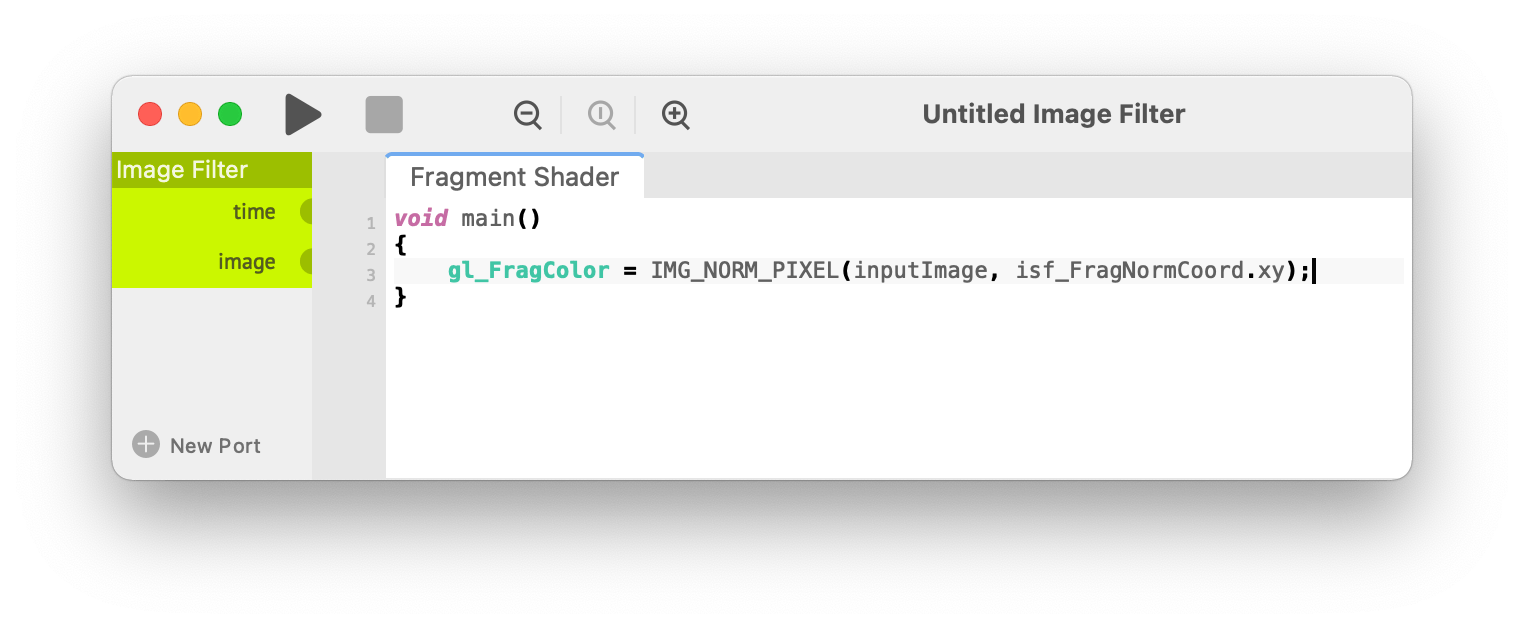Turning graphics shaders into nodes
Vuo can turn a GLSL/ISF fragment shader into a node
New in Vuo 2.0
If you’re familiar with the programming languages C/C++ and GLSL, you can create your own graphics nodes using Vuo’s SDK.
For certain kinds of graphics nodes, there’s a shortcut. You don’t have to write C/C++ boilerplate, just GLSL. And you don’t have to use the Vuo SDK; you can edit the code without leaving the Vuo application.
Vuo can turn GLSL fragment shaders in Interactive Shader Format (ISF) into nodes. The ISF code’s inputs and output are automatically turned into input and output ports on the node.
Creating an ISF node
There are two ways to begin developing an ISF node in Vuo. One
is to start with an ISF fragment shader that you’ve already
written or downloaded. Save the file to the same location that
you would install a
node. Then find the node in your Node Library,
right-click on it, and go to
. (Vuo supports
loading ISF source code consisting of a single
.fs file. If the source code also has a
vertex shader in a .vs file, Vuo may or may
not be able to load it; this is an experimental feature.)
The other way is to start from scratch. Go to , , or . (Making compositions fit a mold with protocols explains Image Filters, Image Generators, and Image Transitions.) This opens a window with a small template as a starting point.
